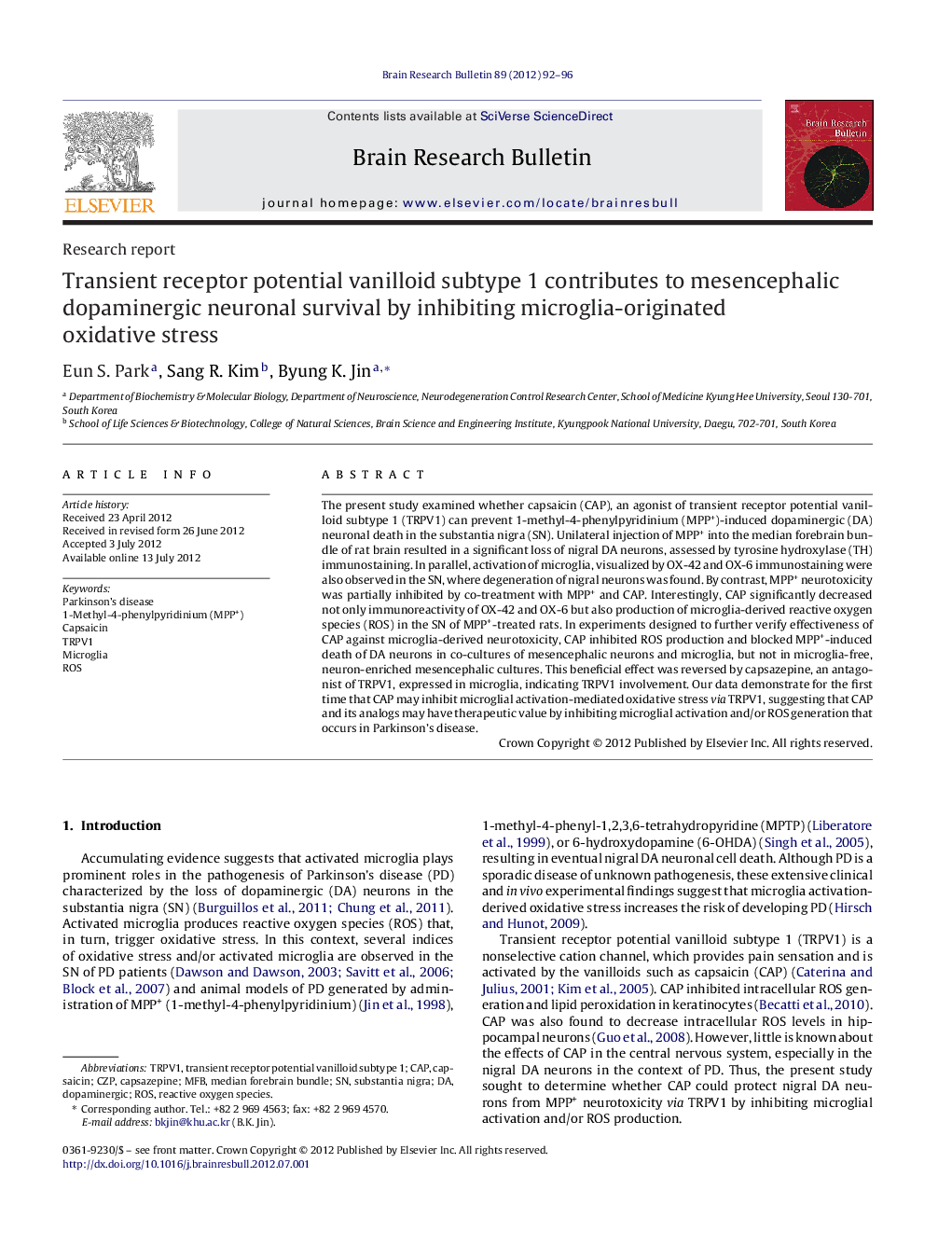| Article ID | Journal | Published Year | Pages | File Type |
|---|---|---|---|---|
| 4318964 | Brain Research Bulletin | 2012 | 5 Pages |
The present study examined whether capsaicin (CAP), an agonist of transient receptor potential vanilloid subtype 1 (TRPV1) can prevent 1-methyl-4-phenylpyridinium (MPP+)-induced dopaminergic (DA) neuronal death in the substantia nigra (SN). Unilateral injection of MPP+ into the median forebrain bundle of rat brain resulted in a significant loss of nigral DA neurons, assessed by tyrosine hydroxylase (TH) immunostaining. In parallel, activation of microglia, visualized by OX-42 and OX-6 immunostaining were also observed in the SN, where degeneration of nigral neurons was found. By contrast, MPP+ neurotoxicity was partially inhibited by co-treatment with MPP+ and CAP. Interestingly, CAP significantly decreased not only immunoreactivity of OX-42 and OX-6 but also production of microglia-derived reactive oxygen species (ROS) in the SN of MPP+-treated rats. In experiments designed to further verify effectiveness of CAP against microglia-derived neurotoxicity, CAP inhibited ROS production and blocked MPP+-induced death of DA neurons in co-cultures of mesencephalic neurons and microglia, but not in microglia-free, neuron-enriched mesencephalic cultures. This beneficial effect was reversed by capsazepine, an antagonist of TRPV1, expressed in microglia, indicating TRPV1 involvement. Our data demonstrate for the first time that CAP may inhibit microglial activation-mediated oxidative stress via TRPV1, suggesting that CAP and its analogs may have therapeutic value by inhibiting microglial activation and/or ROS generation that occurs in Parkinson's disease.
► Capsaicin protects dopaminergic neurons from MPP+ neurotoxicity in vivo. ► Capsaicin inhibits MPP+-induced microglial activation and O2− production. ► TRPV1 inhibits MPP+ neurotoxicity in co-cultures of neurons and microglia. ► TRPV1 may be beneficial for novel treatments of Parkinson's disease.
